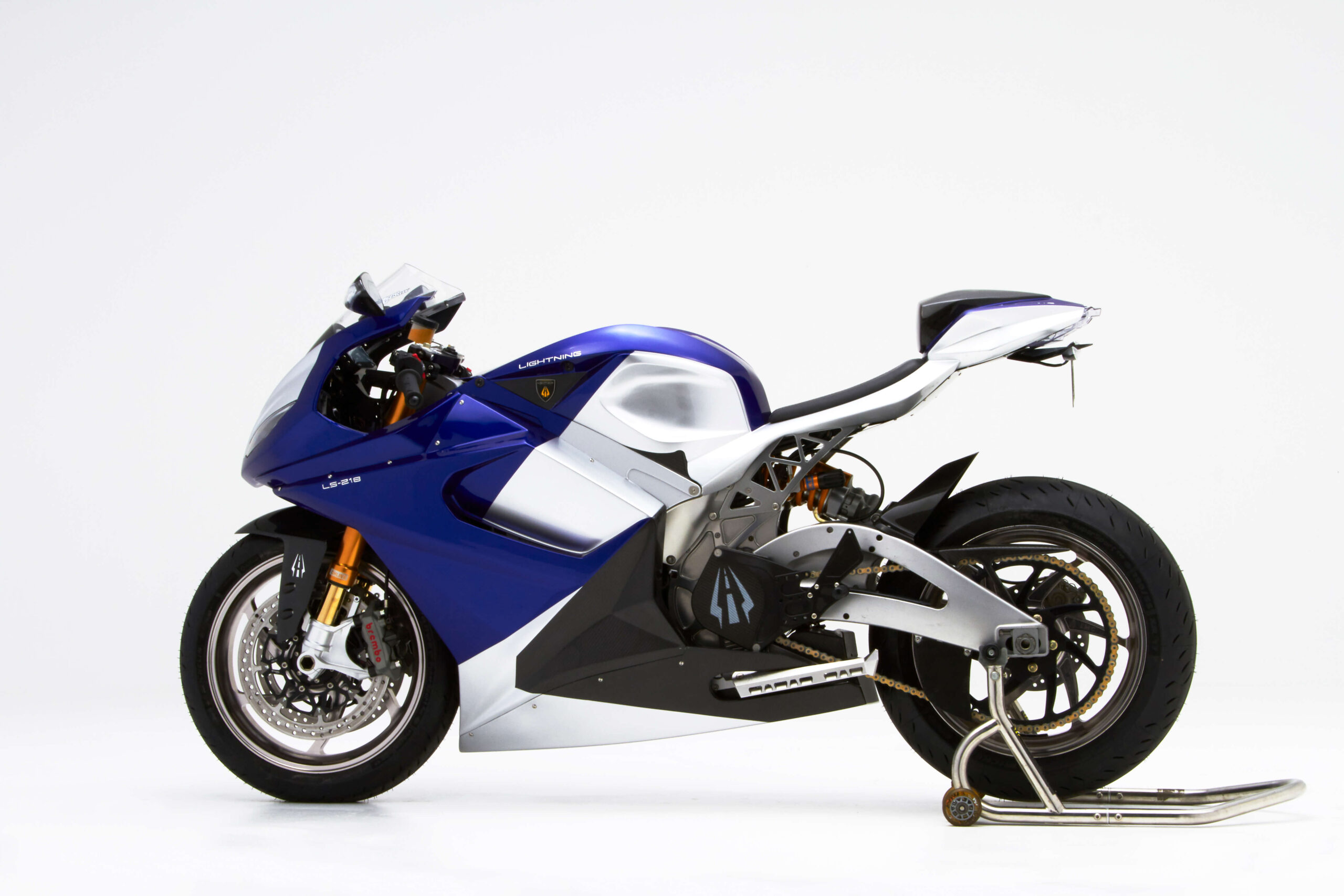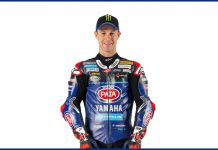Motorcycles, a testament to over a century of innovation, have continually evolved through the years, embracing technological advancements in metallurgy, powertrains, and chassis engineering. Today’s motorcycles are a culmination of this evolution, pushing the boundaries of speed and performance.
In this article, we delve into the fastest production motorcycles available today, eliminating the confusion caused by conflicting information online. We’ve reached out to industry experts to provide you with an authoritative guide to the swiftest two-wheelers on the market.
The Lineup of Speed Demons:
-
Ducati Streetfighter V4 S

-
Aprilia RSV4 Factory 1100

-
Ducati Panigale V4 R

-
Damon Hypersport Premier

-
Kawasaki Z H2

-
Ducati Superleggera V4

-
Kawasaki Ninja H2

-
Lightning LS-218

-
Kawasaki Ninja H2R

-
MTT 420RR

The Historical Speed Journey:
From Suzuki’s game-changing GSX-R750 in the 1980s to the proliferation of race replica models, motorcycles have been defined by their quest for speed. Manufacturers engaged in speed wars, culminating in the 1990s with a gentlemen’s agreement to cap speeds at 186.4 mph.
This pact paved the way for a new focus on overall performance. However, speed remained crucial, leading to designs engineered for mind-bending top speeds. Political concerns prompted innovation, and the agreement eventually gave way to even higher speeds.
Elements That Define Speed:
Several factors determine a motorcycle’s top speed, such as track and weather conditions, power, weight, aerodynamics, and gearing. Smoother tracks reduce friction, while power, weight distribution, and aerodynamics influence acceleration and speed. Gearing plays a pivotal role, in balancing acceleration and top speed. These factors collectively contribute to the exhilarating experience of riding a high-performance motorcycle.
In the realm of motorcycles, speed reigns supreme. The pursuit of top speeds involves a complex interplay of various factors that influence a motorcycle’s performance. Let’s delve into the primary elements that dictate a motorcycle’s top speed, highlighting both the machine’s attributes and the conditions it encounters.
What Other Critical Factors Shape a Motorcycle’s Top Speed?
In the high-octane world of motorcycles, achieving top speeds involves a complex interplay of multiple critical factors. Beyond the fundamentals we’ve explored, let’s uncover additional key elements that significantly influence a motorcycle’s ability to reach exhilarating velocities.
-
Tire Design and Grip: The type of tires and their design play a pivotal role in top-speed performance. High-performance tires with advanced compounds and tread patterns offer superior grip, translating to better traction and stability at high speeds. The tire’s ability to maintain contact with the road under immense forces is crucial for maximizing top speeds.
-
Suspension Tuning: Well-tuned suspension contributes to stability and control at high speeds. Proper suspension setup ensures that the bike maintains optimal contact with the road surface, preventing wobbles or instability that could arise due to aerodynamic forces and vibrations.
-
Braking System: While speed is exhilarating, the ability to decelerate safely is equally vital. An efficient braking system, with powerful callipers and high-quality brake pads, ensures that the motorcycle can slow down effectively, especially when reaching triple-digit speeds.
-
Fuel Quality and Combustion Efficiency: The quality of fuel and the efficiency of combustion impact power output. High-performance engines require premium fuel to ensure complete and efficient combustion, which directly affects acceleration and top-speed capabilities.
Critical Factors Continue
-
Cooling System: An effective cooling system is essential to prevent overheating, especially during prolonged high-speed runs. Efficient cooling helps maintain consistent engine performance and prevents power loss due to excessive heat.
- Rider Skill and Technique: The rider’s skill and technique play a crucial role in achieving and maintaining top speeds. Proper body positioning, throttle control, and precise shifting contribute to minimizing wind resistance and maximizing power delivery. Experienced riders can optimize their aerodynamic profile and control the bike more effectively at high speeds.
- Electronic Aids and Rider Aids: Modern motorcycles often come equipped with advanced electronic aids, such as traction control and stability control systems. These aids help optimize power delivery and prevent wheel slip, enhancing stability and control at high speeds.
- Riding Gear and Streamlining: The rider’s choice of gear also impacts top speed. Aerodynamic riding gear, such as streamlined helmets and suits, reduces wind resistance and drag, contributing to improved performance. The rider’s posture and positioning on the bike can further enhance aerodynamics.
- Quality of Lubricants and Fluids: High-performance engines require top-quality lubricants and fluids to reduce friction and ensure smooth operation. Quality lubrication minimizes power loss and heat buildup, enabling the engine to perform optimally at high speeds.
- Altitude and Air Density: While we touched on elevation earlier, it’s worth noting altitude and air density directly influence engine performance. Higher altitudes with lower oxygen levels result in reduced power output, impacting top speed potential.
In the pursuit of top speeds, these additional factors come together to create a complex and dynamic equation. Each element contributes to the motorcycle’s overall performance, demonstrating that achieving remarkable velocities is a multifaceted endeavour that demands meticulous attention to detail and an understanding of the intricate interplay between various components and conditions.
The Criteria for Inclusion:
Our list comprises production motorcycles available in current or previous model years, encompassing a variety of brands, including boutique manufacturers and homologation specials. Only bone-stock models are considered, highlighting their factory-built capabilities.
Unveiling the Fastest Motorcycles:
Let’s explore the top contenders in the world of speed:
- Ducati Streetfighter V4 S:
Origin: Italy
Power: 205.17 bhp and a torque of 123 Nm
Top Speed: 299 km/h - Aprilia RSV4 Factory 1100:
Origin: Italy
Power:213.89 bhp and a torque of 125 Nm
Top Speed: 305 km/h - Ducati Panigale V4 R:
Origin: Italy
Power: 215 bhp and a torque of 111.3 Nm
Top Speed: 346 km/h - Damon Hypersport Premier:
Origin: Canada
Power: 200 bhp and torque of 200 Nm
Top Speed: 321 km/h - Kawasaki Z H2:
Origin: Japan
Power: 200 bhp and torque of 137 Nm
Top Speed: 280 km/h - Ducati Superleggera V4:
Origin: Italy
Power: 224 bhp and torque of 116 Nm
Top Speed: 299 km/h - Kawasaki Ninja H2:
Origin: Japan
Power: 200 bhp and torque of 133 Nm
Top Speed: 295 km/h - Lightning LS-218:
Origin: America
Power:200 bhp and torque of 228 Nm
Top Speed: 351 km/h - Kawasaki Ninja H2R:
Origin: Japan
Power: 310 bhp and torque of 156 Nm
Top Speed: 400 km/h - MTT 420RR:
Origin: America
Power: 420 hp and torque of 576 Nm
Top Speed: 439 km/h
Conclusion:
From Italian exotica to American turbines, these modern marvels redefine what’s possible on two wheels. As motorcycle technology advances, the quest for greater speed and performance remains a driving force, propelling the industry to new heights. Whether you’re an enthusiast or a speed aficionado, the world of motorcycles promises an exhilarating journey into the future of speed.
In the exhilarating world of motorcycles, speed and performance are paramount. The modern motorcycle landscape boasts an impressive array of high-speed machines that push the boundaries of what’s possible. However, like any technology, these motorcycles come with their own set of advantages and disadvantages. We have also delved into the pros and cons of the fastest modern motorcycles, shedding light on both the thrilling highs and potential challenges they bring.
Pros:
- Unmatched Thrill: Riding a high-performance motorcycle is an unparalleled experience, offering an adrenaline rush like no other. The acceleration, cornering, and sheer speed provide an exhilaration that few other activities can match.
- Cutting-Edge Technology: The fastest motorcycles often feature state-of-the-art technology, including advanced electronics, aerodynamics, and materials. This not only enhances performance but also contributes to rider safety and control.
- Pinnacle of Engineering: These motorcycles represent the pinnacle of engineering prowess. Manufacturers pour their expertise into creating machines that achieve remarkable power-to-weight ratios, resulting in astonishing acceleration and top speeds.
- Showcases Innovation: Fast motorcycles drive innovation in the motorcycle industry. Breakthroughs in powertrains, aerodynamics, and materials used in these bikes often trickle down to more accessible models, benefiting all riders.
- Competition and Prestige: The quest for speed leads to healthy competition among manufacturers. This competition drives advancements and establishes brand prestige, making owning a fast motorcycle a symbol of status.
Cons:
- High Costs: The cutting-edge technology and engineering that go into these motorcycles come at a price. High-performance bikes often command premium price tags, making them inaccessible to many enthusiasts.
- Skill and Responsibility: Riding a high-speed motorcycle requires advanced riding skills and a deep understanding of the machine’s capabilities. Novice riders may find these bikes overwhelming, potentially leading to accidents.
- Limited Practicality: Many of the fastest motorcycles are optimized for performance, sacrificing practicality in terms of comfort, storage, and fuel efficiency. Long rides and daily commuting might not be as enjoyable on these machines.
- Maintenance Complexity: Advanced technology and components often mean intricate maintenance requirements. Routine servicing and repairs can be more expensive and may require specialized expertise.
- Safety Concerns: Pushing the limits of speed increases the potential risks associated with motorcycle riding. High speeds amplify the consequences of accidents, making safety gear and responsible riding even more crucial.
Fusion
The fastest modern motorcycles represent a thrilling fusion of technology, engineering, and speed. While they offer unmatched excitement and innovation, they also come with costs and considerations. As riders, it’s important to weigh the pros and cons before embarking on the journey of owning and riding these high-performance machines.
Ultimately, responsible riding, proper training, and a genuine passion for motorcycles can help enthusiasts navigate the exhilarating world of speed while staying safe and informed.


































